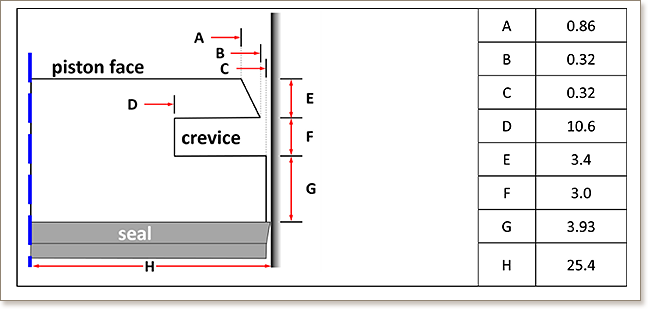
The development and design of future internal combustion engines requires fundamental understanding and the capability to model the autoignition and pollutant formation behavior of petroleum-based and other fuels. Naphthenes are an important constituent of gasoline, and they can comprise larger portions of unconventionally-derived gasoline. There is a lack of data and validated models for 5-membered ring naphthenes. In this work, the autoignition characteristics of cyclopentane, and two of its substituted analogues, methylcyclopentane, and ethylcyclopentane are investigated using a twin-piston rapid compression machine. Each fuel is studied at engine-representative conditions: 20, 50 bar and 700–980 K, with mixtures containing stoichiometric fuel/oxygen ratios at various extents of dilution with inert gases.
Negative temperature coefficient (NTC) behavior is observed for cyclopentane, though first-stage ignition and associated low temperature heat release behavior are only evident at temperatures below that for the transition to NTC. Pressure is found to have a larger impact on the reactivity than oxygen dilution, with both effects amplified in the NTC region. The cyclopentane experiments in this study are challenged by the sensitivity of this molecule to non-uniform, or mild ignition phenomena within the NTC region. The addition of saturated sidechains in methyl- and ethylcyclopentane significantly increases the reactivity of the molecules, especially at low temperature and NTC conditions. At the highest temperatures though, there is little difference between the three naphthenes. Typical two-stage ignition behavior is observed across a wide range of temperatures for these alkyl cyclopentanes with no mild ignition observed within the NTC region.
A recently developed model for cyclopentane is extended to include reactions for methylcyclopentane, and this is used to simulate the new experiments. The simulation results indicate that low temperature reactivity of cyclopentane is dominated by HO2 elimination of the RO2 species producing cyclopentene, and this inhibits autoignition since it is a very stable molecule. When a methyl group is substituted on the ring, additional RO2 isomerization pathways are available, and these substantially increase the fuel reactivity. HO2 elimination is also important with methylcyclopentane, and this leads to significant production of cyclic olefinswhich can further react to produce diolefins. These findings are consistent with observations that have been made in other experimental apparatuses.


